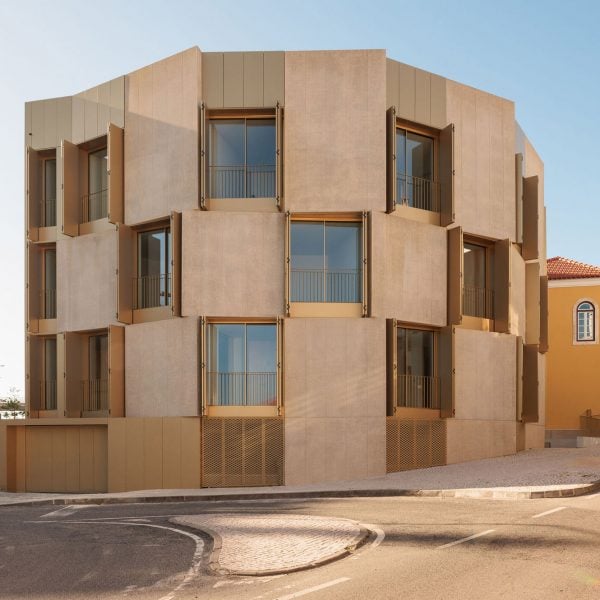Architecture studio Bureau des Mésarchitecture has completed an apartment block in Leiria, Portugal, wrapped in concrete and gold aluminium shutters.
Situated on a corner site where the old and new neighbourhoods of Leiria meet, the block of five apartments is connected to an existing, yellow-painted 20th century house, which was renovated and converted into two additional apartments as part of the project.
Lisbon and Paris-based Bureau des Mésarchitecture looked to balance these two distinct conditions, drawing on the yellow-painted exterior of the existing building to inform a curved facade of pale concrete with golden aluminium.
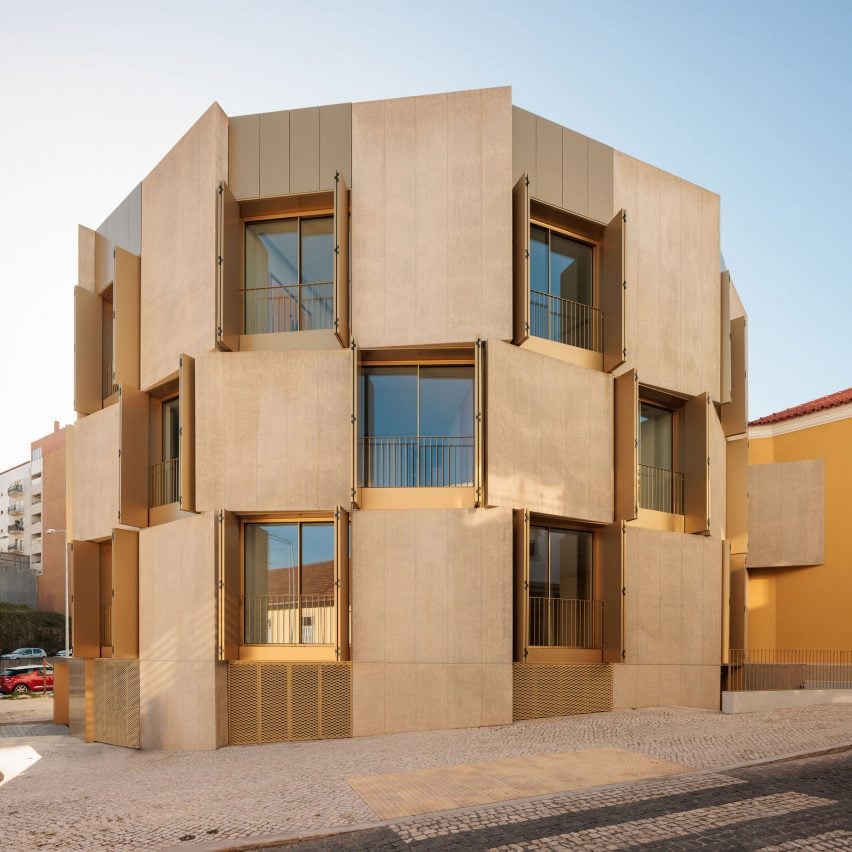
“The site is at the articulation of two neighbourhoods with different urban fabric – the old part of the city with one to two storeys buildings and a new area, under development, with 4 storeys or more buildings,” the studio’s founder Didier Fiúza Faustino told Dezeen.
“There were two main ideas for the project: designing a housing building with a defensive facade and a soft interior, designing a facade that can be totally closed or totally open,” he added.
“The concept can be resumed in two words: protect and care.”
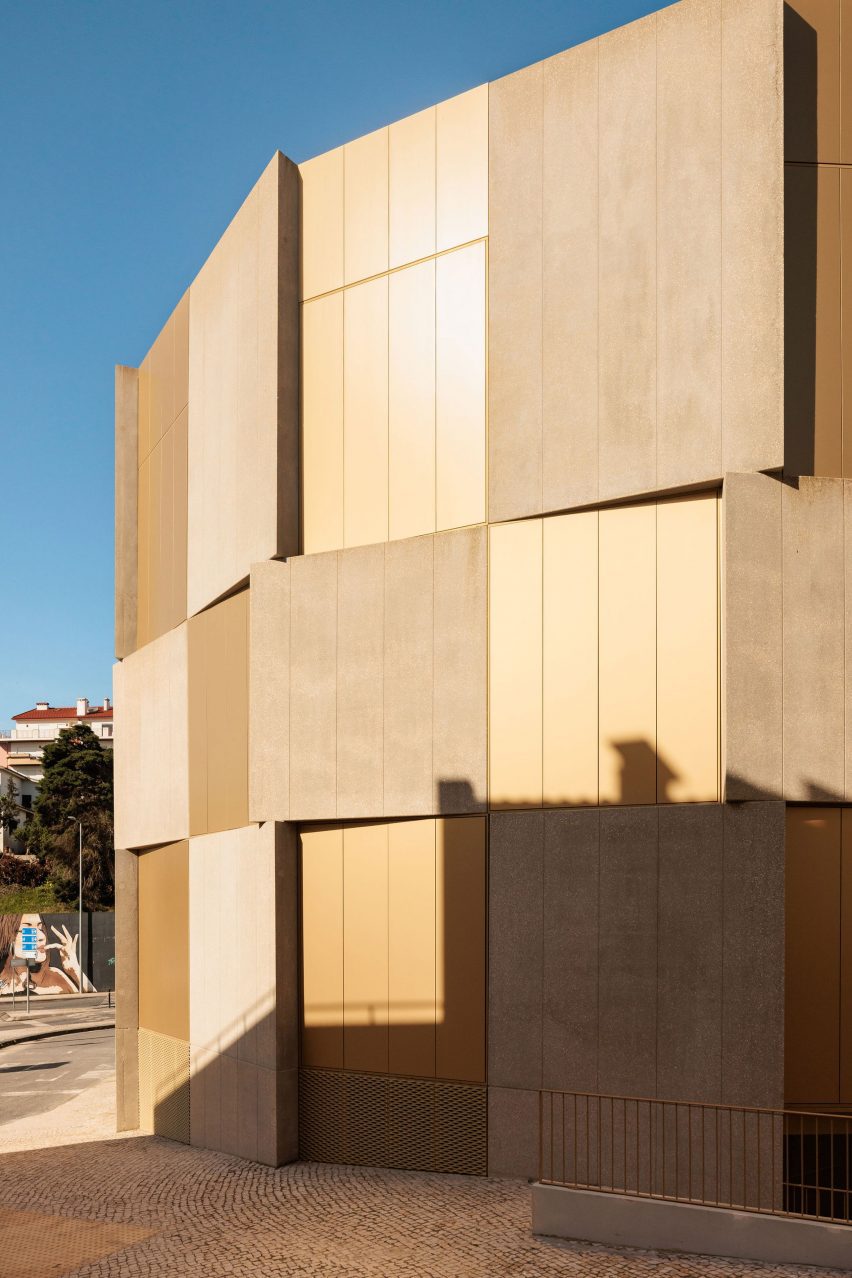
The housing block sits atop a gold-panelled base leading to a garage dug into the gently sloping site, with a staircase on the southern street leading up to the entrance.
Positioned where the old and new buildings meet, this entrance leads into a central stair and lift core alongside a communal room.
The fan-shaped plan of the new building has been used to organise the kitchens and bathrooms at its centre, with the semicircular front of the block used to provide each floor’s apartments with large, well-lit living areas.
Each of these spaces opens onto small balconies, while the uppermost apartments have access to a private rooftop terrace via a gold spiral staircase.
The large windows of the living areas and their balconies can be completely opened or closed to the street via the exterior’s bifold aluminium shutters, which are contrasted by solid areas of exposed concrete.
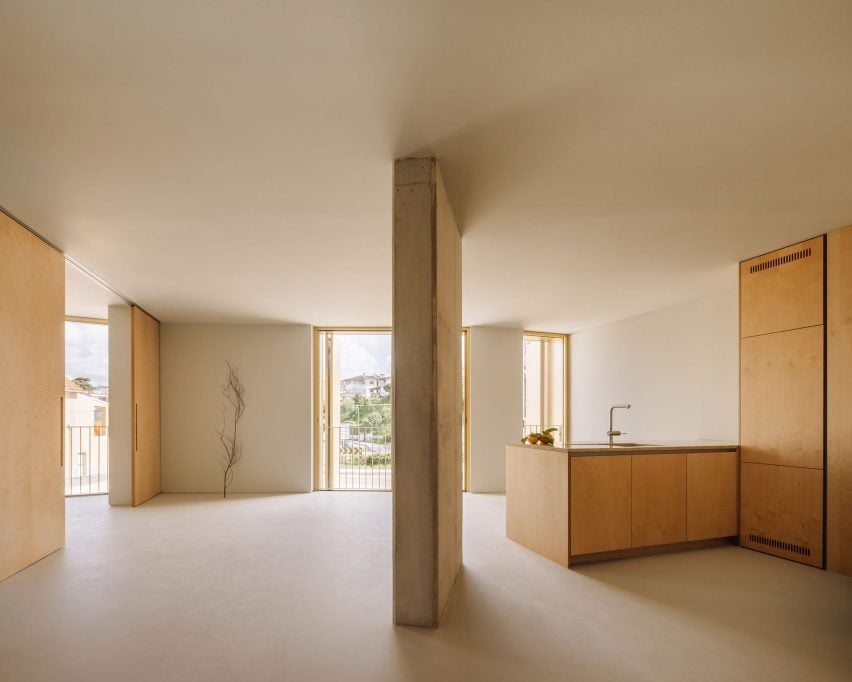
“We chose the materials to express the duality of roughness and softness, of mass and lightness,” explained Faustino.
“Concrete could give this sense of tectonic mass,” he continued. “Aluminium, on the contrary, feels thin and light. Both materials also play a game of contrast between the matt appearance of the concrete panels and the shiny reflection of the sunlight on the aluminium shutters.”
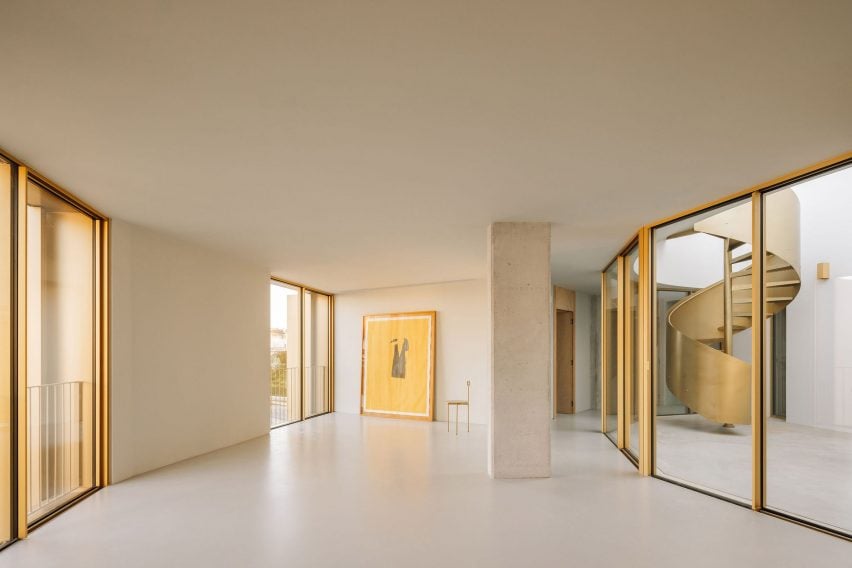
This duality has been carried through to the apartment interiors, where a structure of exposed concrete columns and beams is contrasted by areas of full-height wooden panelling and storage.
Elsewhere in Leiria, Portuguese studio Contaminar recently completed a home at the city’s highest point, using stacked concrete layers to create 360-degree views over the landscape.
The photography is by Francisco Nogueir.

